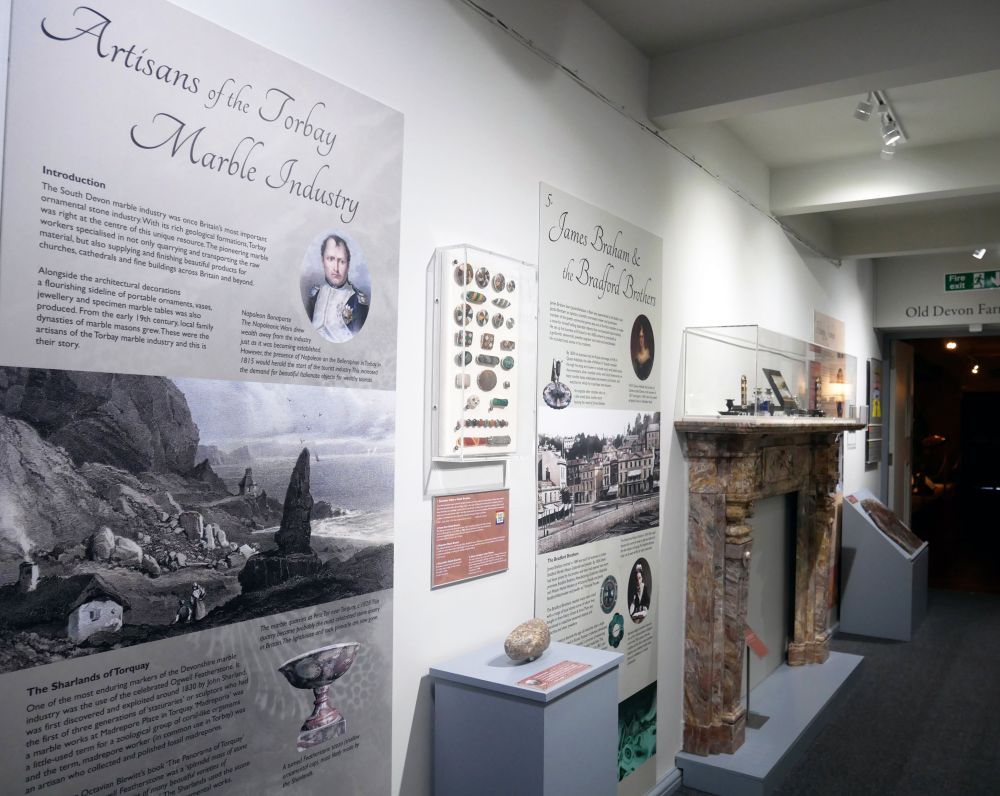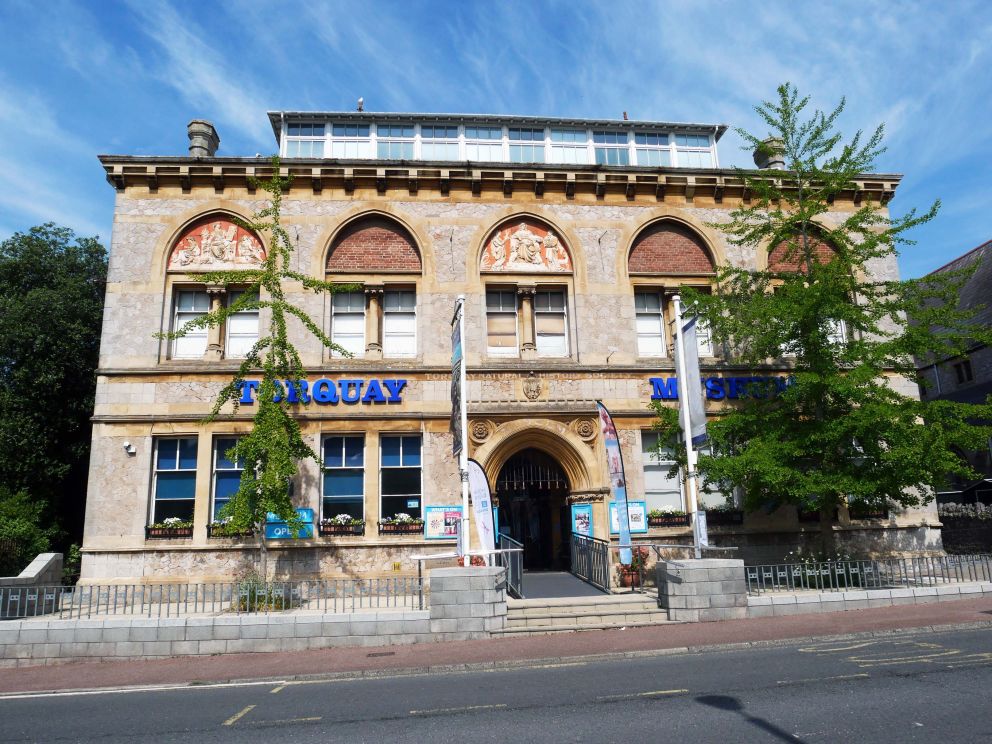Artisans of the Torbay Marble Industry
Introduction
The South Devon marble industry was once Britain’s most important ornamental stone industry. With its rich geological formations, Torbay was right at the centre of this unique resource. The pioneering marble workers specialised in not only quarrying and transporting the raw material, but also supplying and finishing beautiful products for churches, cathedrals and fine buildings across Britain and beyond.
Alongside the architectural decorations a flourishing sideline of portable ornaments, vases, jewellery and specimen marble tables was also produced. From the early 19th century, local family dynasties of marble masons grew - the Sharlands, the Royal Marble Works of Daniel Woodley and the Blacklers, Harry Grant & Sons, James Braham and the Bradford Brothers, Henry Jenkins & Son. These were the artisans of the Torbay marble industry and if you would like to find out more about them, click here.
Read More 

Torquay Museum
The marble quarries at Petit Tor near Torquay, c.1828. This quarry became probably the most celebrated stone quarry in Britain. The lighthouse and rock pinnacle are now gone.
Read More 

Coral Seas
It is the corals or madrepores (as the textured coral-like fossils were once known) that enable us to easily recognise Devonshire marble. In the 1800s, tens of thousands of pebbles containing them must have been collected by madrepore workers and fossil hunters along the coastline between Teignmouth and Babbacombe to become souvenirs.
From 400 to 360 million years ago, the Devonian coral seas were rich not only in corals but also sponge-like creatures, stromatoporoids and crinoids - a form of sea lily. These ancient tropical reefs are not directly related to modern ones
as extinction events removed whole groups of organisms. The pioneering marble workers did not know that the best marbles would lie in and around these reefs in the locality of Torquay, Ashburton, Ipplepen and Ogwell. The most iconic coral was ‘Featherstone’ which was never found in beach pebbles.
Read More 

English Riviera UNESCO Global Geopark
Devonian Coral Seas. © English Riviera UNESCO Global Geopark
Read More 

A Lost Industry Rediscovered
Until the publication of Prof Gordon Walkden’s books ‘Devonshire Marbles: their geology, history and uses’ in 2015, we knew very little about this industry and the people who worked in it. In Prof Walkden’s words, “The Marble Works are gone, the quarries are overgrown and the working families have moved on, the labels and the records are lost.” This is all true except for Grants of Devon Ltd which is still operating in St Marychurch, an incredible reminder of Britain’s most important decorative stone industry.
It is possible to see more of the work of the artisans of the marble industry by visiting sites around the English Riviera UNESCO Global Geopark. We have highlighted places of interest, some of which are quite easy to access.
Read More 

Read More 

New Gallery Opened on 6th July 2024
As part of our grant awarded from the new Local Heritage Grant scheme, we are working to improve the content of this page and our gallery. We are very grateful to the National Lottery Heritage Fund for choosing to fund our small project 'Artisans of Torbay's Marble Industry'.
The redesigned gallery includes most of the Museum’s collection of Devonshire marble objects with some new acquisitions including the Nick Crawford Collection of Devon brooches. There are also loan objects from private collectors which we hope to change every few months.
Read More 

Read More 

Support Torquay Museum
Did you know that whenever you buy anything online – from your weekly shop to your annual holiday – you could be raising free donations for Torquay Museum with easyfundraising? Find out how!
Stay Connected with Our Newsletter
Be the first to hear our latest news by signing up to our newsletter. Also don't forget to follow us on social media - @torquaymuseum.
















